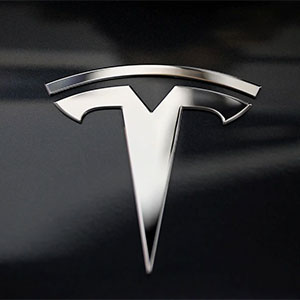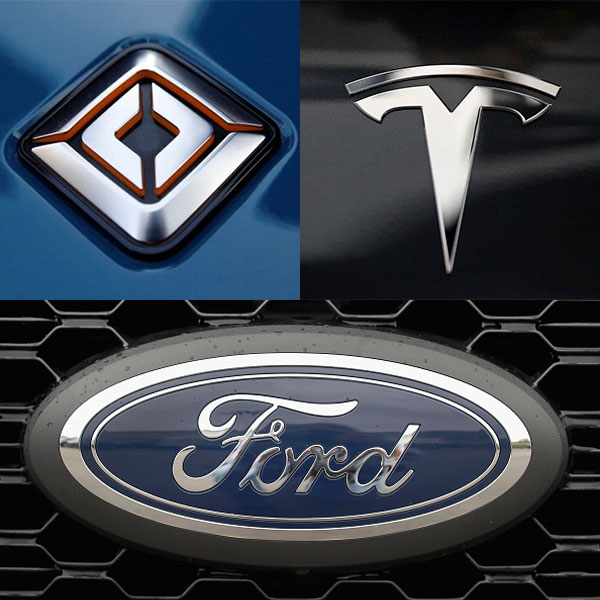Category: Independent research on EVs
Competition Heating Up in Pickup Trucks
 Rivian established a first mover advantage in the electric pickup truck market when it launched the R1T in 2021. Having won the coveted Motor Trend Truck of the Year award for 2022, Rivian, we believe, held the market share lead in EV pickup trucks as of the end of 2022.
Rivian established a first mover advantage in the electric pickup truck market when it launched the R1T in 2021. Having won the coveted Motor Trend Truck of the Year award for 2022, Rivian, we believe, held the market share lead in EV pickup trucks as of the end of 2022.
Fresh on the heels of having won the Motor Trend Truck of the Year for 2023, Ford announced on January 5th that it has sold 15,617 F-150 Lightning trucks since the vehicle was unveiled to customers in May of last year. Ford has not so quietly been claiming that in each of the last two months it has sold more EV pickups than any other manufacturer.
By the end of Q1 2023, it is likely that Ford will pass Rivian to become the overall leader in electric pickup sales in the United States. This is not necessarily surprising, as Ford’s classic F-150 has been the best-selling truck in the United States for 46 consecutive years. Importantly, Ford offers the F-150 in multiple model variants that range in price from $40K to $90K. And Ford has many years of brand equity from which to draw. Moreover, while both Rivian and Ford are relatively inexperienced at building EVs, Ford has a demonstrated ability to produce vehicles in large volumes—something that Rivian has struggled with.
Another headwind facing Rivian is the inevitable launch of Tesla’s Cybertruck. To be clear, the Cybertruck is way behind schedule, relative to original estimates provided by Tesla, but it now appears that limited production will begin this summer. Rather than go head-to-head against Rivian and Ford in the market for conventional-looking EV pickup trucks, Tesla is taking a risk with a unique body style that is sure to electrify some, yet conceivably turn-off others. The angular, space-age body of the Cybertruck is equipped to handle any type of terrain, will supposedly feature a bullet-proof body, and will be manufactured with a unique mix of light-weight aluminum and ultra-hard 30x cold-rolled stainless steel.
From what we can gather, fly-over drone footage available over the Internet of Tesla’s Gigafactory in Texas revealed the recent delivery of at least part of a 9,000-ton Giga Press, which will be used to cast aluminum parts in the first production run. Elon Musk has said the Cybertruck, when available, will be the car he drives to work in Austin. The Cybertruck has the potential to put a freeze on the electric pickup truck market, as consumers will be curious to learn more about it before purchasing a rival vehicle. This is especially true for prospective Rivian buyers who desire an elite luxury pickup truck. While a case can be made that the R1T and Cybertruck may ultimately appeal to different buyers, it is likely that consumers who are interested in the R1T would also consider the Cybertruck for similar reasons. Could this be part of the reason why Rivian stopped disclosing its backlog?
Tesla Implements Overdue Price Cuts
 Rather than fight it out with the U.S. government over whether a standard Model Y is a cross-over or an SUV, which would make it ineligible for the $7,500 federal tax incentive, Tesla recently enacted over-due price cuts on the Model Y, as well as its entire product line. With a 31 percent price reduction on a base level Model Y (inclusive of the tax credit) Tesla is now better positioned to retain its leading market share of EV sales in the U.S., which currently stands at 65 percent.
Rather than fight it out with the U.S. government over whether a standard Model Y is a cross-over or an SUV, which would make it ineligible for the $7,500 federal tax incentive, Tesla recently enacted over-due price cuts on the Model Y, as well as its entire product line. With a 31 percent price reduction on a base level Model Y (inclusive of the tax credit) Tesla is now better positioned to retain its leading market share of EV sales in the U.S., which currently stands at 65 percent.
The move recognizes the unsustainable 30 percent-plus rise in Tesla’s list prices over the last two years brought about by supply chain bottlenecks and component shortages coming out of the global pandemic. Rather than rely on Tesla’s generous pricing umbrella, competitors will have to follow suit. The next battleground will be the composition of battery materials and critical minerals thresholds required to qualify for the full federal credit.
At the start of the New Year, Tesla’s core EV models, the Model 3 sedan and Model Y small SUV, became eligible for a U.S. federal income tax credit for the first time in over two years.
The most important price cut was on the base-level Model Y, which was reduced from $65,990 to $52,990—a 20 percent reduction. When factoring in the $7,500 federal tax credit, the price cut amounts to a 31 percent reduction in price. At its new price point, the base level Model Y for the first time fits comfortably within the $55,000 cap for passenger cars and cross-overs.
Over the last two years, Tesla Model 3 prices rose by over 30 percent, as component shortages and supply chain bottlenecks drove prices higher both during and immediately following the end of the pandemic in the U.S. These price increases were unsustainable, and inconsistent with growing the EV market further. The new Model Y price opens up an entirely new segment of buyers unable to afford a $66,000 car, and makes Tesla’s pricing more consistent with the intent of the Inflation Reduction Act, whose goal was to stimulate demand for non-carbon emitting vehicles, while making EVs more affordable. The previous federal tax credit had income limits, and some lawmakers complained that it subsidized EV purchases only by the wealthy. With a $125,000 single tax payer, $150,000 head of household, and $300,000 joint household income limit, the new tax credit opens up the market to a new demographic that may not have considered an EV purchase previously.
It will be interesting to see whether Tesla will be able to keep up with demand. The Model Y and Model 3 together account for about 65 percent of the EV market in the U.S. At the end of 2022, Tesla was just getting started in the ramp-up of its Austin Texas factory, which was said to be producing about 12,000 Model Ys per month. In Austin, production is limited to the Model Y. The ramping of production means that Tesla will achieve greater scale economies as time progresses, particularly as component shortages and supply chain bottlenecks continue to improve.


